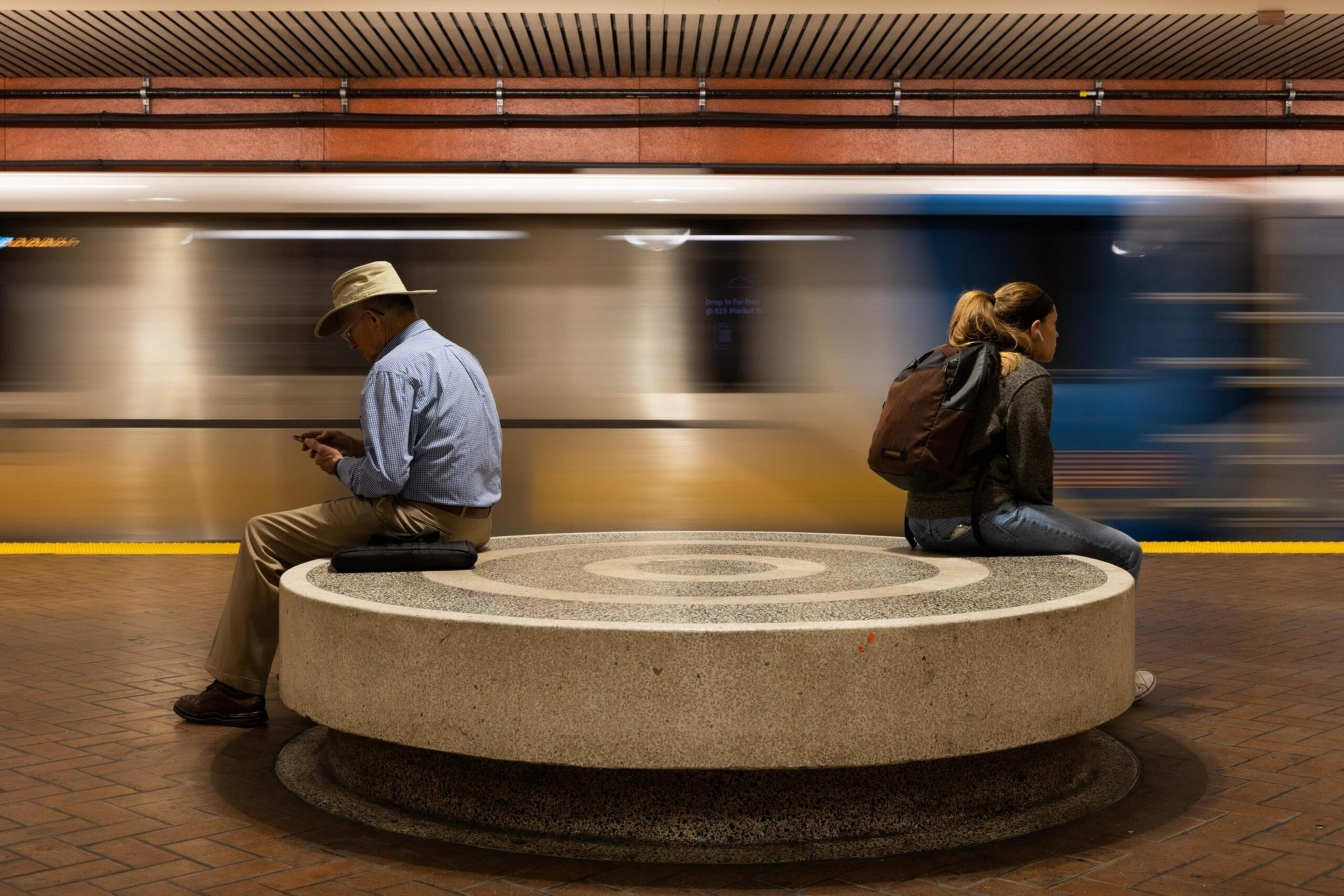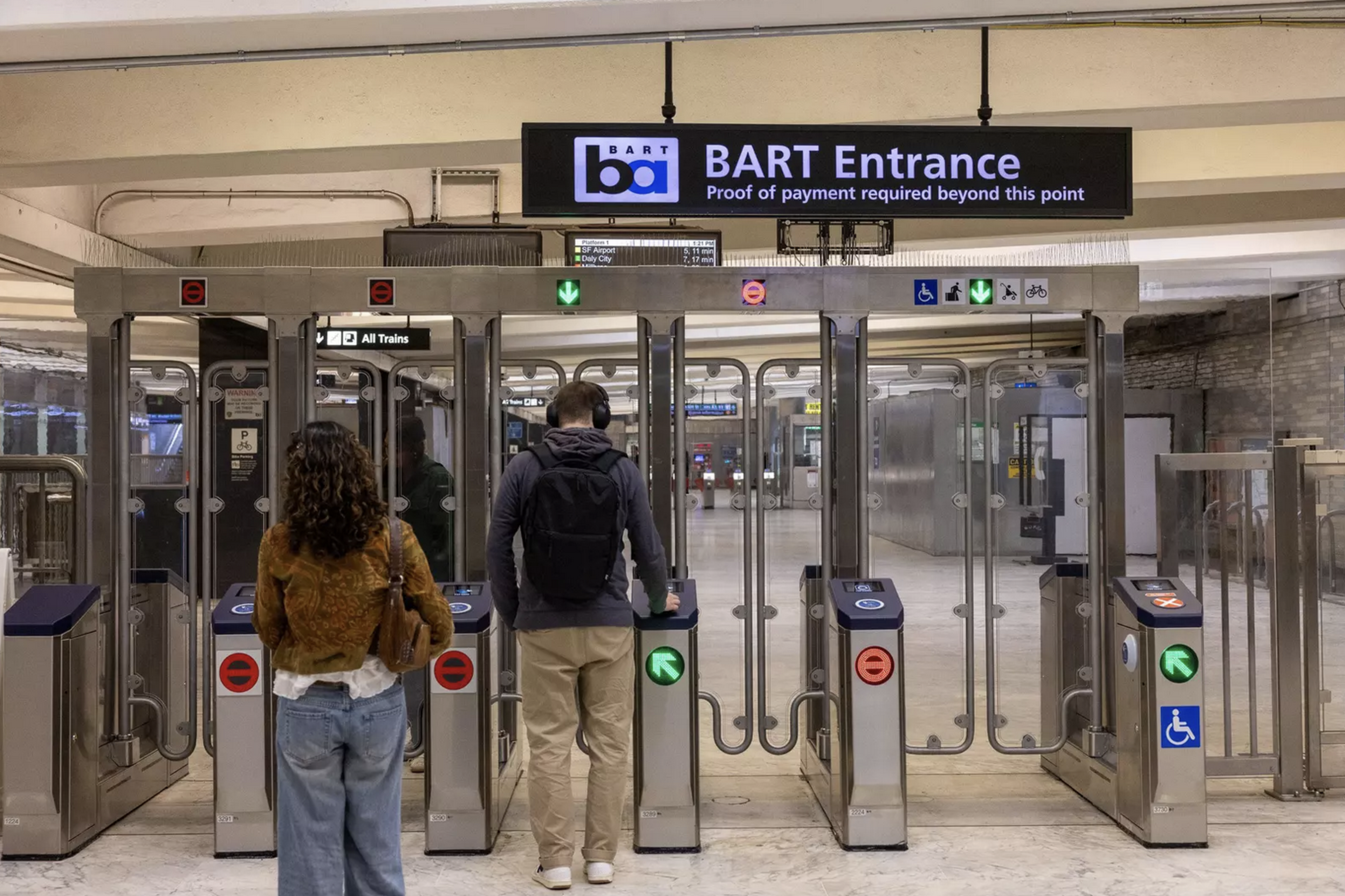More people are using the Bay Area Rapid Transit system to get around — ridership is up 25% since January — and agency officials say the recent rollout of contactless payment may be the reason.
BART in August became the first Bay Area transit network to launch Tap and Ride (opens in new tab), allowing anyone to quickly pay for trips with bank cards or mobile phones instead of a paper ticket or Clipper card.
The system was used for 7.9% of all trips over the last five weeks, according to research slated for presentation to the transit system’s board of directors Tuesday. It averaged nearly 10% of all trips over the last week, with weekend use of around 12% and weekday use of around 8%.
BART’s airport and airport-adjacent stations saw heaviest usage, with 28% of entries at San Francisco International Airport and 12% each at Oakland International Airport and Millbrae. The Powell station, drawing on nearby Union Square foot traffic to hotels and other attractions, saw about 10%.
Dorian Crocker, 17, stood Saturday morning at a Market Street bus stop near the Powell BART station, waiting to catch the 5 Muni bus to see Della Mae, a bluegrass band, perform at Golden Gate Park for Hardly Strictly Bluegrass. The Oakland resident had ridden BART from Lake Merritt using the tap-to-pay feature.
“It works great,” Dorian said, adding that he’s used the feature several times but maintains a Clipper card to access youth discounts. “It’s easier not to have to add money to your Clipper card.”
The teen said he wasn’t surprised by the system’s popularity, noting that BART has been advertising it heavily on trains and station signage. “It’s a lot more intuitive to just use your card rather than having to fill up,” he said.
His grandmother Darby Brandli said the tap-to-pay system reminds her of transit payment methods in London. She also praised BART’s recently installed fare gates, saying they have improved conditions.
“The gates eliminate a lot of the people jumping the gates, and the clientele on the cars seem very different,” she said.
September marked the system’s strongest month for ridership, with a daily average of 168,000 passengers, up nearly 6% from August. The year’s highest single day was Sept. 10, a Wednesday, with 219,918 paid exits.
Ridership is notably stronger year-over-year — especially for Saturday trips, which grew 19.6% from September 2024. BART’s average Sunday ridership jumped 7.8%, while weekday ridership climbed 5.9% over the same 12-month period.
BART spokesperson Alicia Trost says the resurgent ridership shows that people have been “hungry for this technology.” She said the tap-and-ride system “has been a huge success straight from launch,” citing preliminary data showing that 10% of BART riders “immediately” switched from Clipper cards to contactless payment.
“Basically, the data clearly shows that either folks immediately switched because they wanted to, or it’s all new riders,” she said. “Either way, it’s good.”
And it’s not just work trips that are filling up BART’s trains. The transit system’s August ridership snapshot (opens in new tab) noted the impacts of weekend events that drew passengers, such as Outside Lands and Golden Gate Park concerts by Dead & Company and Zach Bryan and Kings of Leon.
Additional traffic came from sporting events, with 15 games at Oracle Park for the San Francisco Giants, a dozen for Pioneer League baseball’s Oakland Ballers, seven for the Golden State Valkyries’ debut WNBA season, and a pair of games for the Oakland Roots soccer team.
“Data shows that the nights, not the evening commute, but going-out time, has been the biggest growth market,” Trost said. “These are people who aren’t going to work and don’t need a Clipper card, or don’t want a Clipper card and just want to tap their Apple Pay or credit card with no setup.”

Allena Oglivie said she was aware of the tap-to-pay system but plans to stick with her Clipper card as she waited Saturday afternoon for the 5 bus on Market Street.
Oglivie, who boarded BART in Berkeley, said she was headed to see Samara Joy perform at Hardly Strictly Bluegrass, adding that her Clipper BayPass is included in student tuition at UC Berkeley, where she studies computer science.
Last month, BayPass trips represented 30% of exits at the Downtown Berkeley station. Ridership growth at that station has outpaced systemwide growth since the semester’s start.
Oglivie said the transit pass represents better value than paying per ride with tap-to-pay, which charges based on distance traveled. “That racks up really fast for my budget, because I go back and forth between SF and Berkeley,” she said. Before the university included BART access in tuition, she said, she would spend about $20 weekly on round-trip fares.
The Los Angeles native, accustomed to Metro’s flat $1.75 fare, suggested that BART explore alternative revenue sources such as merchandise sales. She noted the recent popularity of BART-themed items at Baggu, a store that used the transit agency’s logo in a recent drop.
“A lot of people love the BART logo,” she said. “Maybe you could find other avenues to get your income.”
Ridership is increasing
BART ridership has surged 25% since January, according to transit data (opens in new tab). Ridership patterns show BART remains heavily commute-dependent. Weekdays average 175,000 riders compared to 93,000 on weekends.
Tuesdays remain the busiest day for the transit system, although Wednesday and Thursday are virtually tied, averaging 188,000 to 191,000 riders, while Fridays drop to 151,000, closer to weekend levels.
The steady growth from January’s 134,000 daily average suggests continued recovery in Bay Area commuter patterns and return-to-office trends.
With Fleet Week, Salesforce’s Dreamforce conference, and a No Kings protest this month, BART expects an influx of non-commute passengers who would benefit from the new payment system.
“The fact that we have something so easy to use is really exciting,” Trost said, “and puts us in a good position for all these events coming up.”
